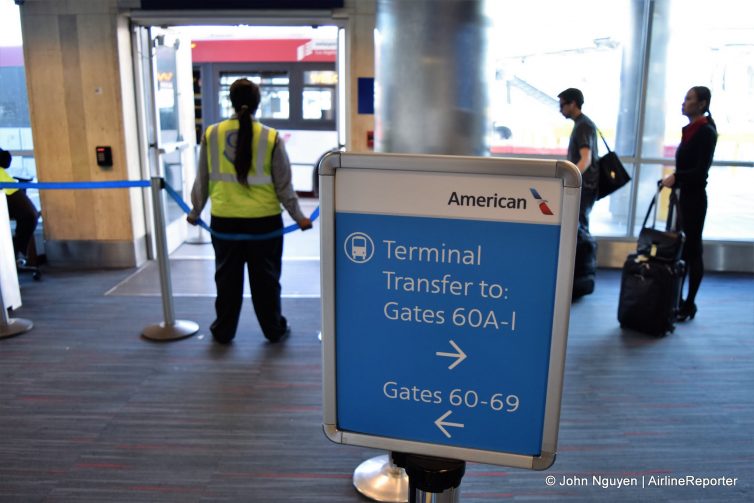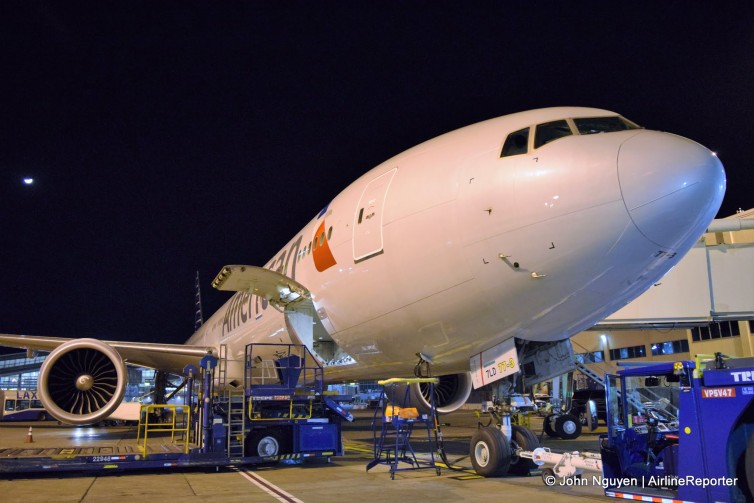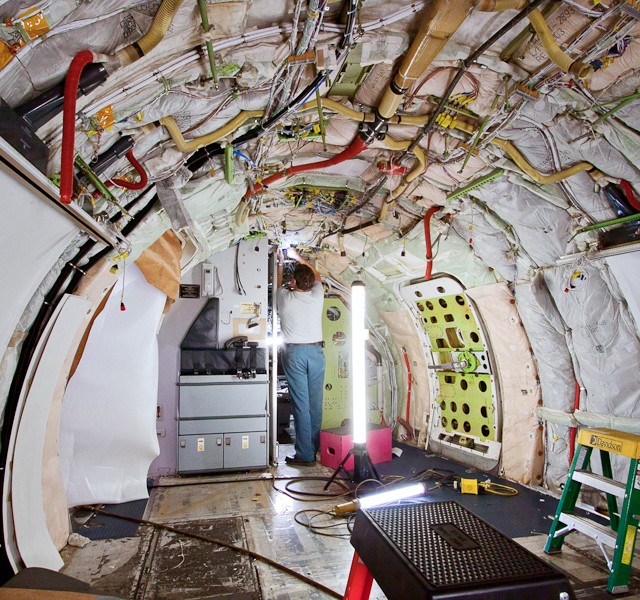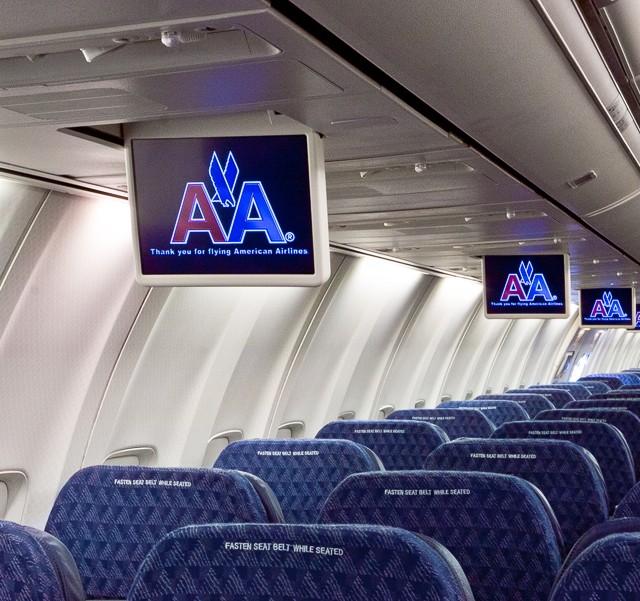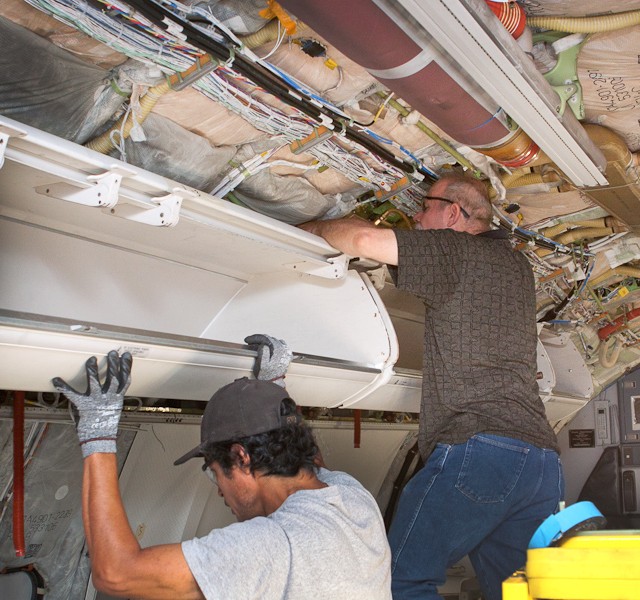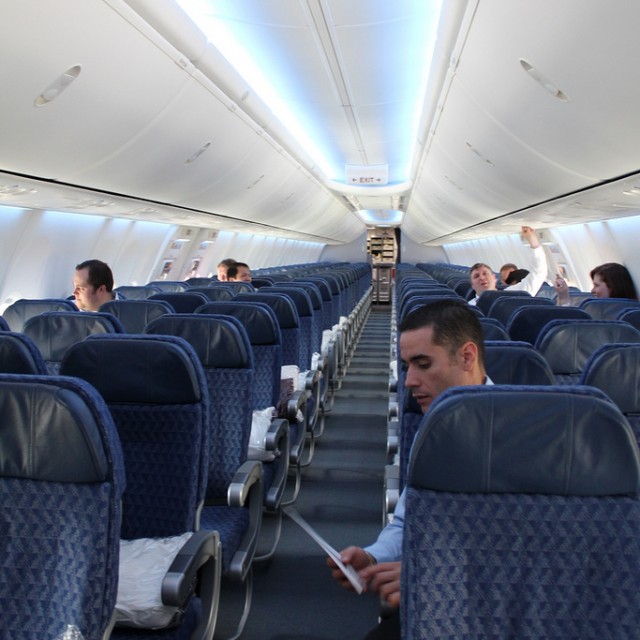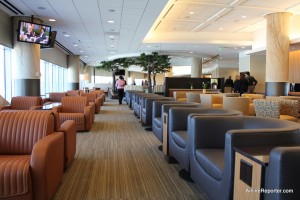On May 16, American unveiled a series of operational and visual updates at Los Angeles International Airport (LAX) in an attempt to better streamline passenger flow and optimize capacity ahead of the summer travel season. From gate renumbering to new signage, the changes were implemented overnight, in time for the busy Monday morning rush. While there was no media announcement, AirlineReporter was invited to see the changes for ourselves. With AA being spread over two separate terminals and undertaking a large expansion at breakneck speed, something had to be done. Here’s what you need to know’¦
Browsing Tag: Admiral’s Club
Previously, I discussed the process and reasoning for using miles for an economy ticket on an American Airlines Boeing 777-300ER from Los Angeles to Sydney. In this story, I am going to share the actual flight experience, and discuss if this was the right call… or a huge mistake.
FLYING AMERICAN DOWN UNDER: Before the Flight
American Airlines Flight 73
Los Angeles International Airport (LAX) to Sydney Airport (SYD)
Equipment: Boeing 777-323ER
Scheduled Departure Time: 9:50pm (actual 10:21pm)
Scheduled Arrival Time: 7:55am+2 (actual 7:31am+2)
Scheduled Flight Time: 15 hours, 5 minutes (actual 14 hours, 9 minutes)
The day came, and we headed out to dinner before going to LAX to catch our evening flight. While taking our dinner at a leisurely pace, I checked on our flight status and realized that I had confused the departure time as being 10:50pm instead of 9:50pm; fortunately I caught my mistake with enough time to rush through our meal and still make it to the airport comfortably.
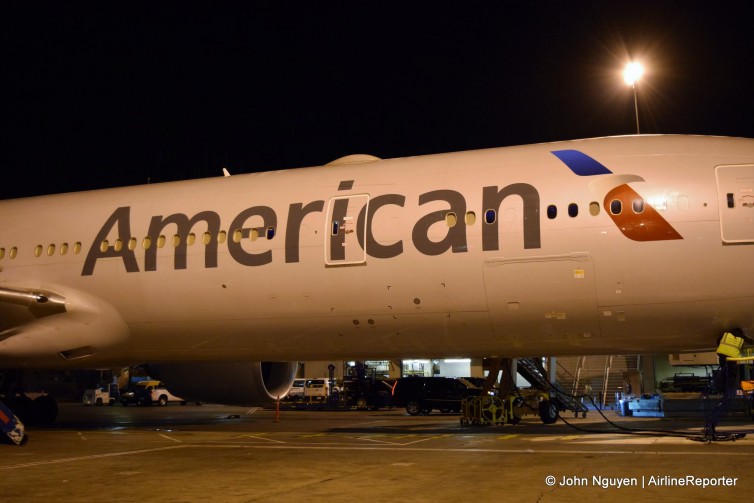
An American Airlines 777-300ER (N720AN) bound for SYD on the inaugural flight pushes back from Gate 41 at LAX.
Less than a week after covering American Airlines’ launch of their new Los Angeles-Sydney service, I found myself onboard Flight 73 on a last-minute holiday down under. The route featured American’s flagship Boeing 777-300ER, with my personal-favorite business class seat. In spite of holding status on both American and Alaska, which would entitle me to at least a little bit more leg and elbow room in coach, I willingly (!) chose to sit in a regular economy seat for a 15-hour flight… and managed to survive. A feat made even more impressive (or harrowing, depending on your point-of-view) by the fact that I was accompanied by my wife.
Now, I’d like to claim credit for taking one for the AirlineReporter team and be able to gloat for making the trip, but I’m not as magnanimous as my colleague JL, who flew a Spirit Airlines Bare Fare “for science.” There were very strategic, practical, and self-serving reasons for booking seats behind the curtain instead of in front of it.
I’m splitting my experience into two parts: first, about why I chose economy (this time), followed up with my actual flight review of American’s economy service to Sydney.
Last week I had the chance to check out American Airline’s newest aircraft — a Boeing 737-800 with Boeing’s Sky Interior. This is just one step in American renewing their fleet and brand.
The airline is currently in the process of replacing their aging MD-80 aircraft with new Boeing 737s. American plans to retire at least 25 MD-80s in 2011 and it is not exactly known when all MD-80s will be out of service. American will receive an additional 54 Boeing 737s with Sky Interior over the next two years (story continues below photos).
- Inside the cabin of an American 737 being retrofitted.
- New pop down LCD screens are being in stalled.
- New bins are being in stalled on AA
- American’s new Sky Interior looks updated and clean.
Click photos for larger version. All retrofit photos by American, Sky Interior by Airline Reporter.
The airline plans to upgrade their older 737s to have newer seating and larger bins. In May 2010, American began updating its existing fleet of Boeing 737s. The retrofit includes the installation of new seats, new cabin interiors, updated in-flight entertainment systems and more storage throughout the aircraft. The retrofit is slated for completion by the first quarter of 2013. The retrofits will be handled in-house by American employees at the airline’s Maintenance & Engineering base located in Tulsa, OK.
Video: American Airlines Boeing 737 gets makeover
American is also in the process of updating all Boeing 757s used on domestic routes. Updates include the installation of new seats, new cabin interiors and updated in-flight entertainment throughout the aircraft. Also, First Class will receive two additional seats, which increases the number of First Class seats from 22 to 24 on each aircraft. The 757 aircraft enhancements began in August 2010 and have a planned completion of December 2015. As of early May 2011, American has completed upgrades to ten 757s.
American will also be increasing their fleet of Boeing 777s with the addition of five 777-300ERs with deliveries slated for 2012 and 2013. The -300ERs will supplement their -200ERs and will become the largest aircraft that American flies.
“American Airlines has made a significant investment to enrich the flying experience for our customers through the purchase of new aircraft and the refurbishment of our existing fleet,” said Virasb Vahidi, American’s Chief Commercial Officer. “At American, we are focused on providing a differentiated customer experience, with a distinct focus on best delivering what premium customers value most ’“ world-class products and services. The delivery of the first 737-800 with the new Boeing Sky Interior is our most recent step to deliver on this commitment.”
In the past, there have been times where I had serious concerns about American’s future. They had an aging fleet of aircraft and were not merging like other large airlines. They also had a lack of a solid presence on social media and really just weren’t as “fun” as other airlines. It appears that American realizes they need to change the way they do business to better compete against other airlines. American has already spent $5.5 billion in new aircraft, facility enhancements and on-board improvements between 2007 to 2011 and plans to spend more in the future.
American is trying very hard to stay relevant and hoping that customers will take notice of their effort. Will it be enough to survive without a merger? Only time will tell, but it seems American is on a positive track.
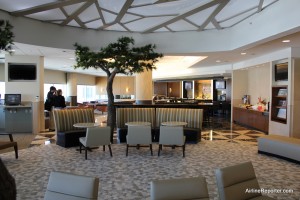
The atmosphere inside the Admirals Club at SFO really feels like the city. I especially love the trees.
American Airlines (AA) has many clubs around the world and it takes something special for one to stand out and the new Admirals Club at San Francisco International Airport’s (SFO) new Terminal 2 does just that.
When walking in, you can tell this club is different. Straight in from the door is a sitting area with (fake) trees that feels like you are sitting at a cafe at some square in San Francisco. The colors, the furniture and even the fire place “captures the spirit and culture of the city,” Nancy Knipp, President of American’s Admirals Club explained to me while we sat under the trees. The club is designed to let passengers know that they are in San Francisco.
There is everything you would come to expect from a high-end lounge: luscious seating, free Wi-Fi, business center, bar, showers and free snacks. Having your flight delayed or being early is no big deal when you can hang out in this lounge.
The new club is a huge improvement from their old one at SFO — literally. The new club is about 95,000 sq feet and can now seat 165 people versus the 90 of the previous club.
If you do not have elite status with American Airlines, you can still get a day pass for the club for only $50. Not a bad deal if you have some time to burn in at the airport. The nice part of AA’s day pass is you have access to all their Admirals Clubs for the day, no matter their location. This is very handy if you have a stop or two during your trip.
